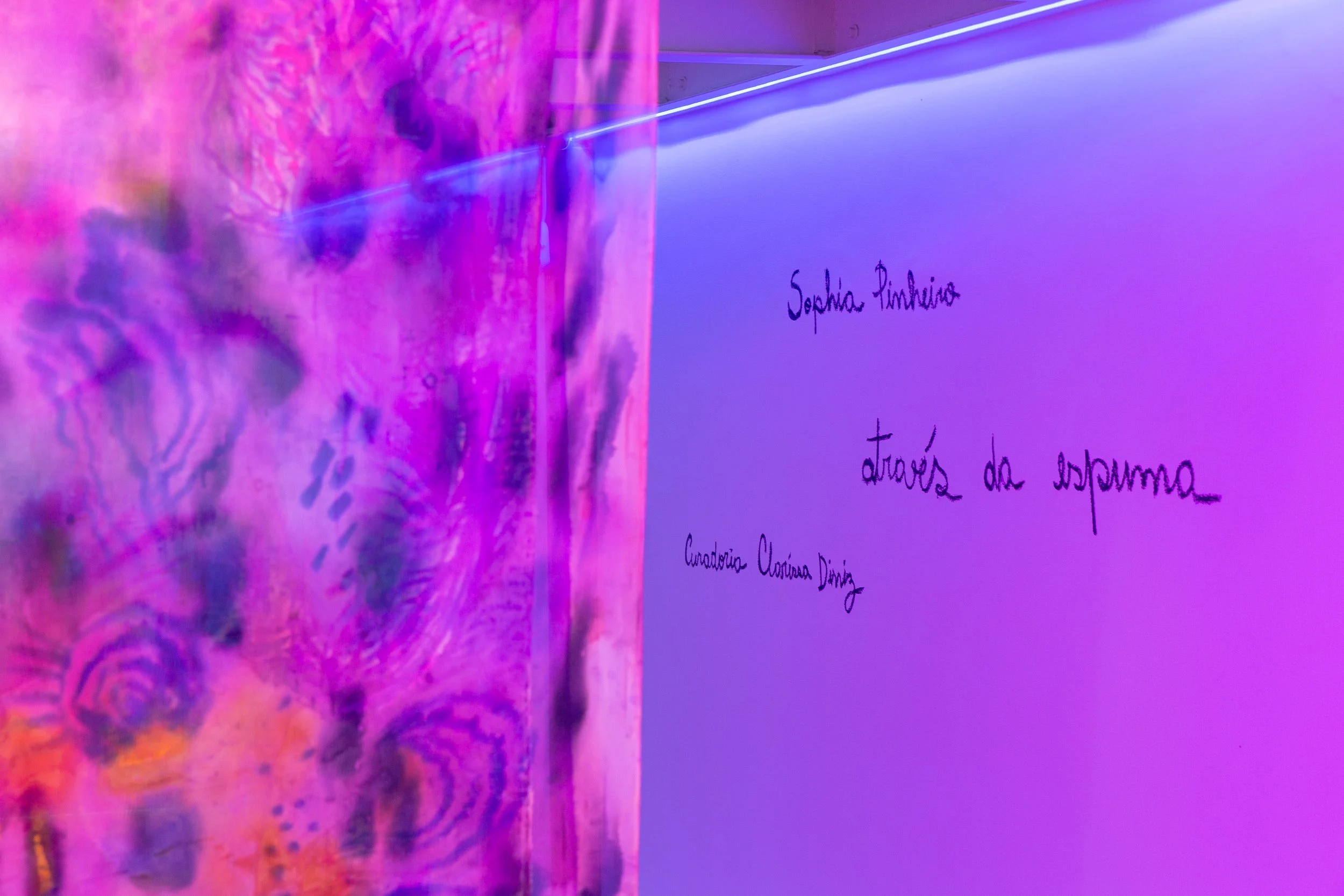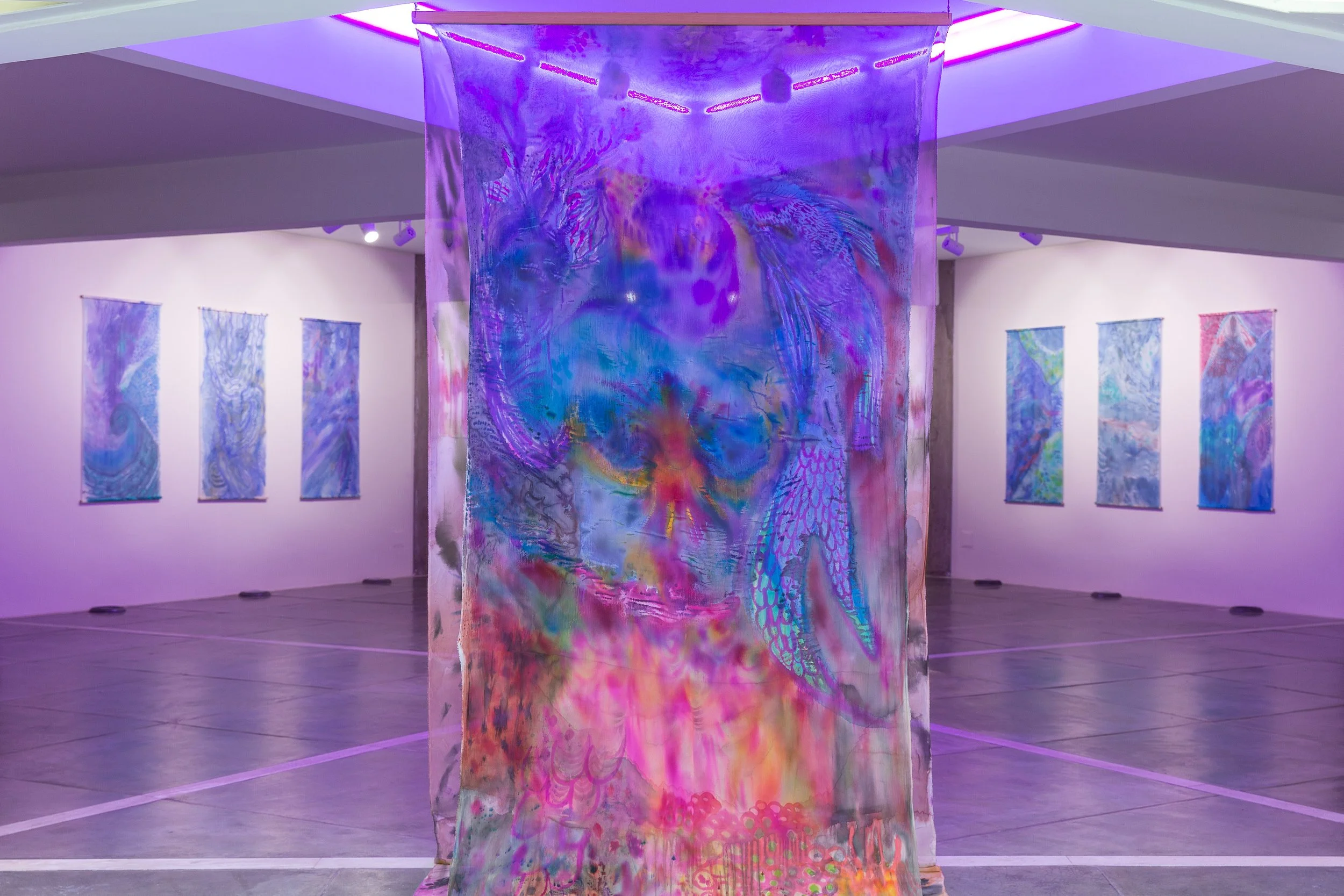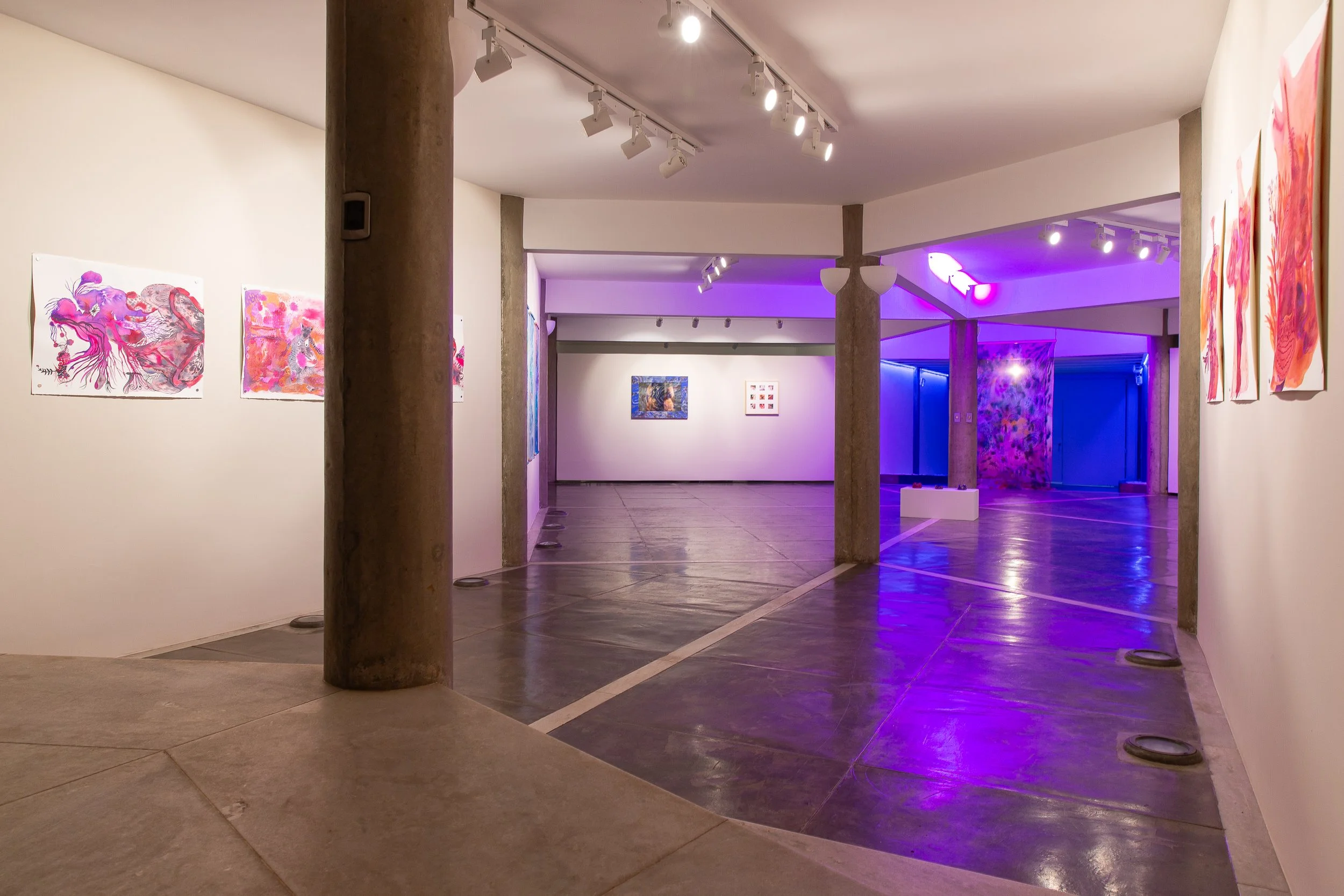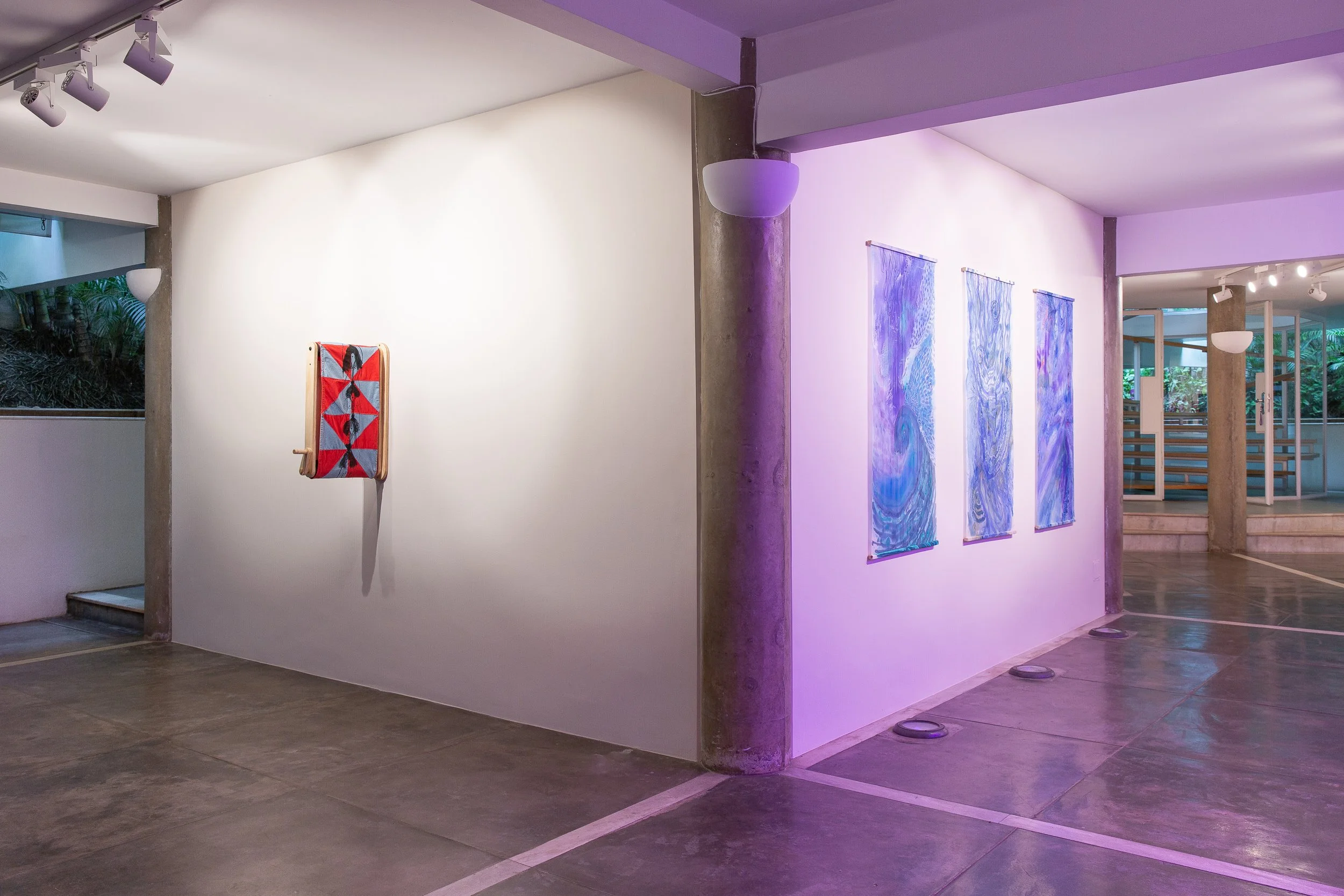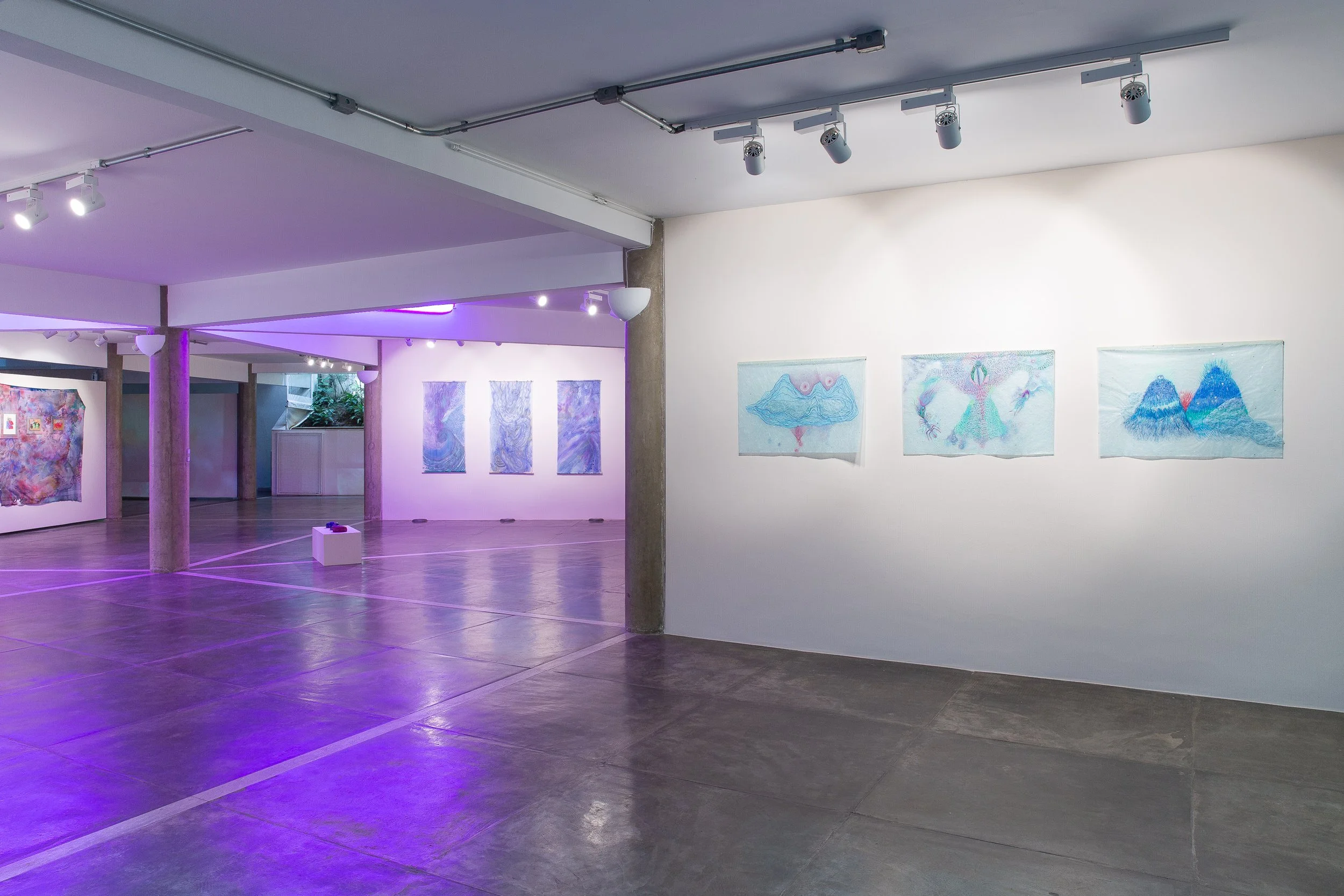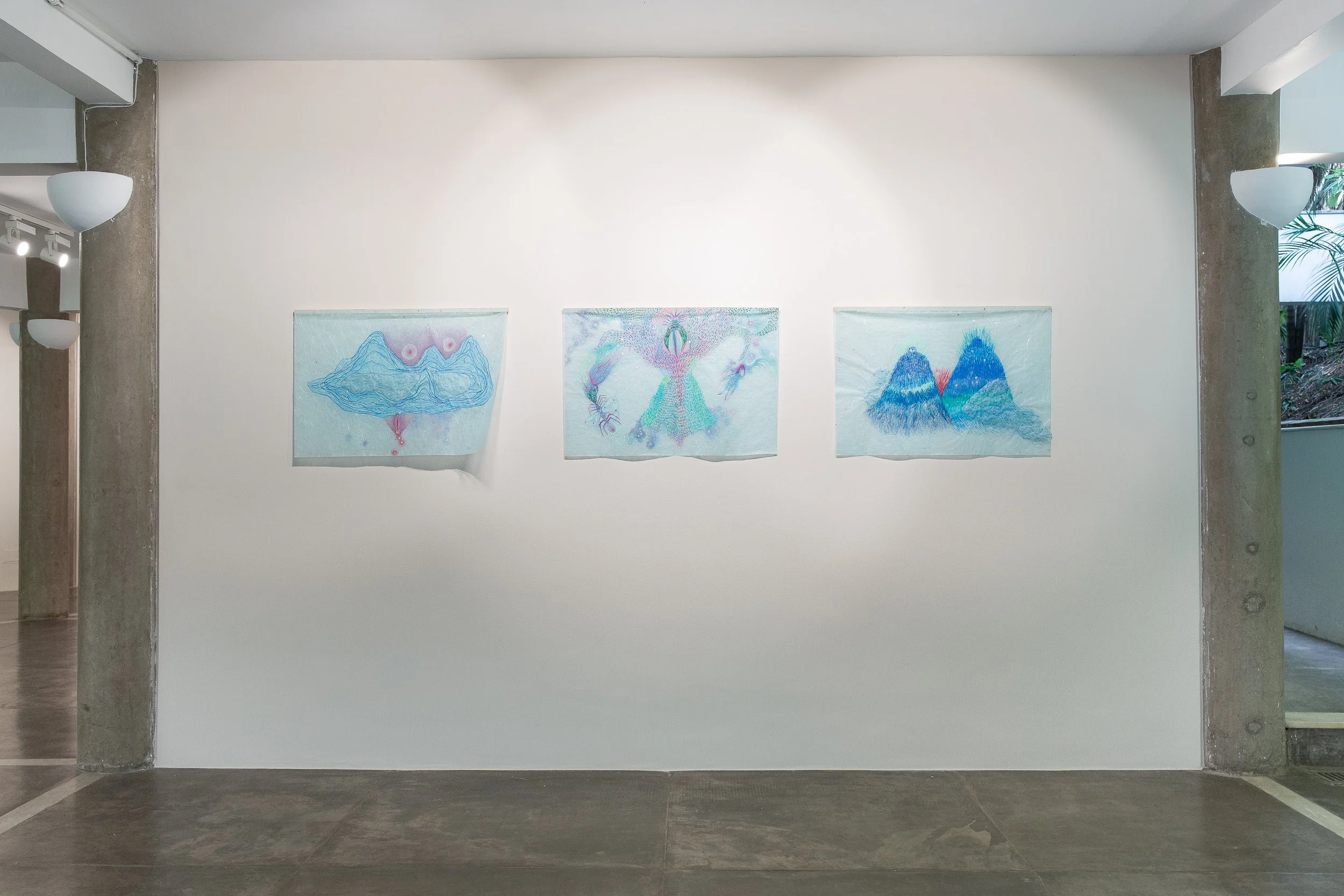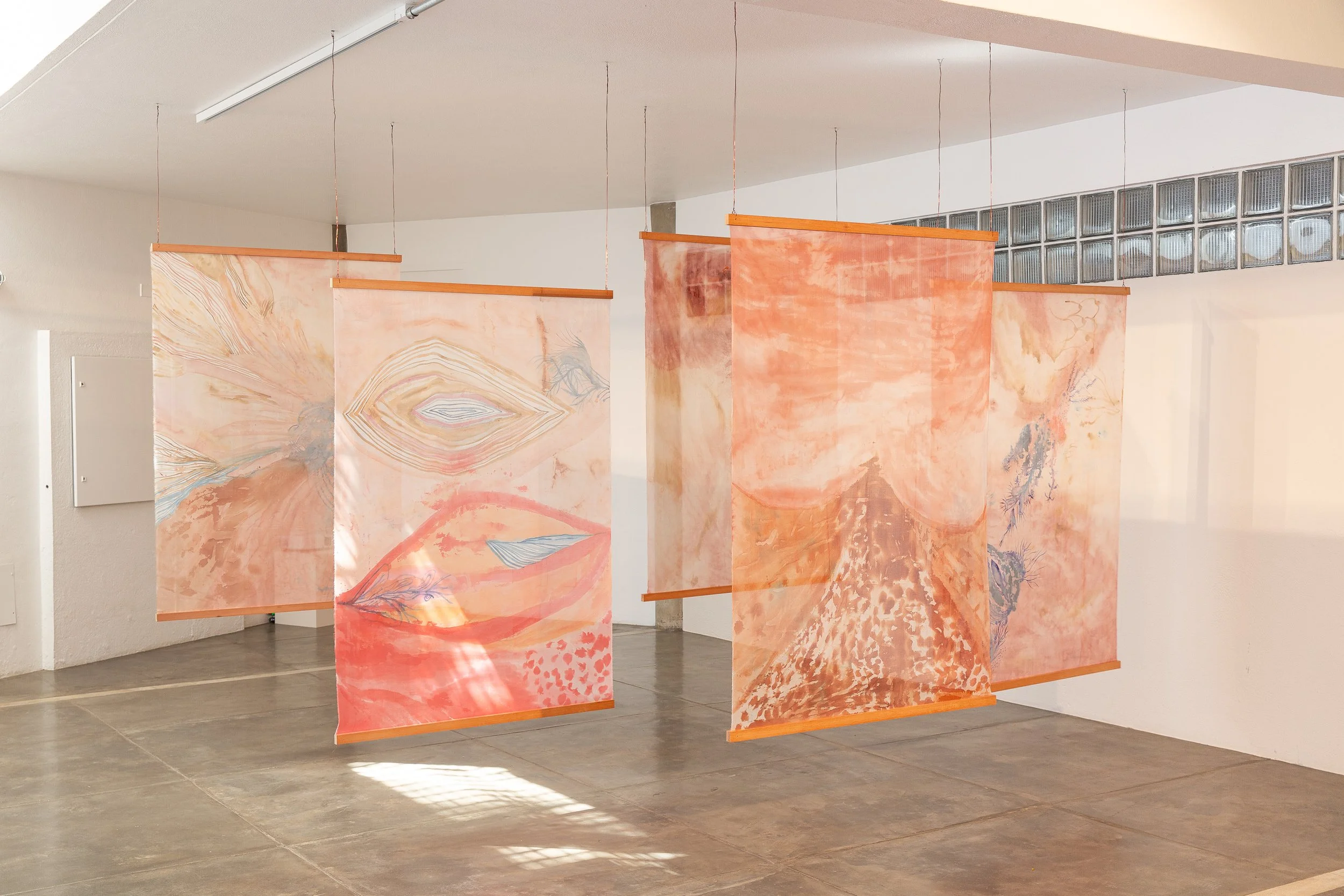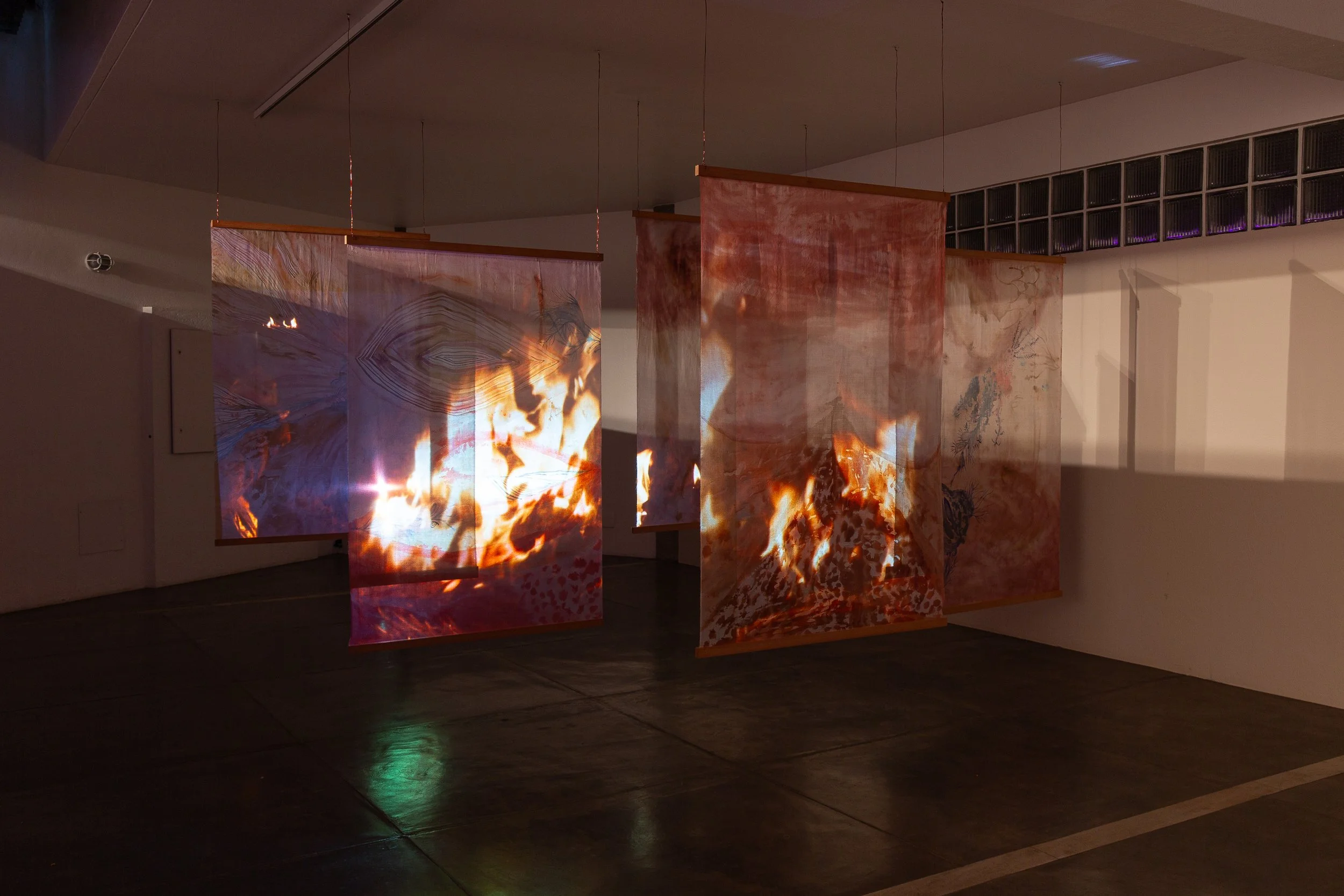
“Through the foam”
SOPHIA PINHEIRO
Solo show
Curatorship Clarissa Diniz
Through the foam, Sophia Pinheiro’s first solo exhibition, movement is set in motion. This gathering of works by an artist who is also an educator, filmmaker, illustrator, researcher, and activist could not be built on solidity. In coherence with the multiplicity of her path across the vast fields of creation and struggle, this exhibition emerges effusively, manifesting the forces of agitated water whose fertility spreads like foam.
Liquefied paintings delicately occupy the gallery space. Poetically and politically feminist, Sophia Pinheiro feels little desire for the rigid quadrature of wooden stretchers or the dense weave of linen. The sensuality cultivated in her pictorial practice is of another order. Thus, at Carmo Johnson Projects, our gaze penetrates translucent paintings that—created on silks and handmade papers of rare transparency and sheen—float in space, enveloping our visual perception in tactile experience.
On diaphanous surfaces, the artist not only paints with water: above all, she paints as water. Her works are not primarily intended to depict, but to perform the liquidity from which, like foam, her imagination emerges. More than a metaphor, the exhibition’s title is therefore an enunciation of the very modes of her artistic making.
Carried by the imagery of her dreams and visions—where different beings intermingle, coexisting among earth, water, and air—Sophia Pinheiro creates in flux. Without seeking an endpoint, her drawings and paintings take shape like a pororoca, the great tidal bore of Amazonian rivers. From the lush and shifting convergence between gestures and materials, forms, images, and narratives gradually sprout. Between watercolor, oil pastel, and pencil, it is the stains of color themselves that guide the birth and metamorphosis of mountains, lungs, insects, drops, cocoons, breasts, flowers, rivers, stars, spirals, wings... In this sense, her subject is not flora, fauna, or chimera, but eminently “the body that transforms and flows, spiraling like water itself in its multiple states and contrasts,” as the artist notes.
Understood as a “vital flow that never ceases,” Sophia’s work explores aesthetic-political conceptions that belong fundamentally to the order of life. Interested in ontocosmic and pedagogical perspectives that move away from linearity as a paradigm of rationality or a method of work, Pinheiro experiments with the forms of art as a territory for imagination and rehearsal of other ways of living. Thus, as we traverse the voluptuous and overflowing blues, purples, and reds of Through the Foam, we find less a gallery of signs than an imagination in movement—a reflection of a poetics elaborated through the weaving together of visual arts, education, cinema, and anthropology.
It is within this culturally diverse terrain that, in the exhibition, we witness images forged between earth and fire. In a video installation, projected onto silks painted with watercolor made from crajirú, urucum, and soil, Sophia Pinheiro presents the film Wajxaqib' B'aatz (2025), born from her experience during the Maya lunar new year in Guatemala. Over the course of one night and day, as mountains and cities are traversed, the Maya community offers gifts and bonfires to the cosmos, in a rite of gratitude and protection. Participating in the 2022 New Year alongside healer Flor de María Álvarez Medrano, the artist felt the strength of social struggles that are inseparable from the sacred.
Therefore, in Through the Foam, alongside the paintings that form its backbone, works from other moments in the artist’s trajectory are also presented—especially the long-term series Vândalas Mascaradas (2013), composed of drawings, photographs, and performances. Drawing on her affective memory of popular festivities such as the Cavalhadas of Goiás, Sophia evokes the visual ambivalence between the euphoria of war and festivity to elaborate a kind of gendered retaliation. Politically and iconographically, the Masked Vandals embrace and play with the warlike dimensions that, between defense and counterattack, have marked the social and intimate experiences of cis and trans women within patriarchal structures.
Beneath carnivalized armor, bodies of undulating curves—threateningly endowed with hair and loud colors—bear masks, jaguars, swords, teeth, horns. They do not fetishize war; they celebrate resistance. Lovingly protecting one another, the Vândalas build trenches and summon animalities and spiritualities as allies. In confronting conflict, they transmute pain into healing, standing beside the recent ceramic series The Time Tellers III (2025), sculptures whose herb-filled cavities enact a smudging ritual when set aflame.
It is against the same backdrop of gendered violence—one that tragically sickens Brazil, among the world’s most femicidal countries—that Sophia Pinheiro symbolically embeds flowers and stones into her body, in the region between her breasts and abdomen, performing small rituals of care now presented in the photographic series Solar Plexus (2025). Together, these images reveal how, alongside the incendiary character that defines Masked Vandals and the artist’s public work in activism and popular education with Indigenous movements, her practice also inscribes itself as intimacy—as shown in the photograph Through the Foam (2025), co-created with Rafael Avancini. In it, Sophia’s bare torso merges with the lines and colors of her painting—which, in turn, rejects the confines of the frame, overflowing and contaminating, inviting us to inhabit the inseparability of life and art.
With similar intent, Sophia Pinheiro welcomes us into Carmo Johnson Projects with a sound installation that merges dream and desire. Immersed in the colorful luminosity of her poetics, we are sensually guided through her imagination by the artist’s own voice and breath—a world in which Sophia appears as part of a generational web. In the photographic diptych Masked Vandals, from the series Feast of Fury (2021), co-authored with Fe Avila, and in the object Ariadne’s Machine (2025) —created from a patchwork quilt sewn by the artist’s great-grandmother—the passage of time unfolds as a matriarchal continuity of life, extending through daughters, mothers, grandmothers, great-grandmothers... Nestled among her own, Sophia Pinheiro lets us see that, even as we foam with rage, we can find within the foam a refuge of protection, rest, and affection.
After all, among frogs and leafhoppers, there are many beings who wisely teach us that, beyond movement, foam is also a nest.

